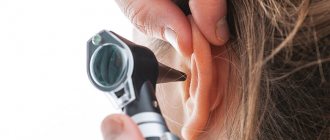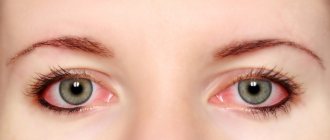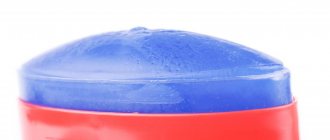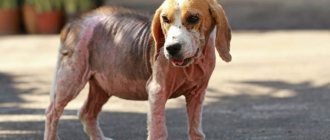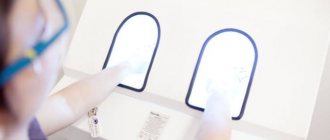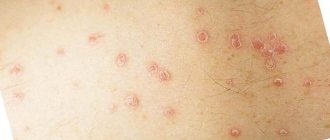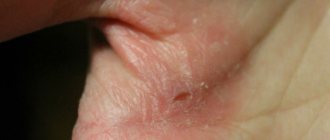Reasons for the development of allergic eczema
The main factor provoking the development of allergic eczema is a violation of the immune status, manifested in increased reactivity of the body. In simple terms, an organism with such disorders produces an inappropriately violent reaction to an ordinary stimulus. The exact reason causing these changes in immunity is unknown. The most likely ones include:
- hereditary predisposition;
- chronic infections and fungal diseases;
- stress and overwork;
- frequent contacts with allergenic factors;
- endocrine diseases;
- chronic diseases of internal organs.
It is not always possible to find a specific cause in every case. Most often, a combination of several factors plays a role in the occurrence of the disease.
Etiology of the phenomenon
The causes and factors that can cause allergic-type eczema are very diverse, but as a rule, it is provoked by allergens, among which the most common are the following:
- chocolate, eggs, nuts and other foods that may cause allergic reactions;
- household chemicals, laundry detergent, cosmetics;
- some medications - sulfonamides, Aspirin, penicillin group.
In addition, eczema can be caused by:
- infections - staphylococcus, pneumococcus, streptococcus, sometimes fungal infection;
- nervous conditions - depression, stress;
- various disorders in the gastrointestinal tract;
- endocrine disorders - problems with the adrenal glands, diabetes, thyrotoxicosis;
- autoimmune diseases;
- genetics.
What exact cause gave rise to the disease can only be determined by a specialist after collecting an anamnesis. Often, in order to establish the root cause of the disease, the patient requires consultation with not one, but several specialists dealing with different pathologies.
What can trigger the occurrence of eczema?
Direct irritants that cause eczema can be:
- chemicals (including detergents and cosmetics);
- food elements;
- insect and snake bites;
- fabrics;
- metals in jewelry;
- pollen and other plant parts;
- medicines.
Often a person is susceptible to several allergens at once.
Types of allergic eczema
Depending on the type of allergen that caused eczema and the form of its occurrence, the following types of this disease are distinguished:
- true eczema - the exact cause of its occurrence cannot be determined. Most likely, a combination of external and internal factors plays a role. The rashes are located symmetrically and have a clear stage pattern (erythema - rash - weeping - crust formation). The course is chronic;
- microbial eczema - in this case the allergen is an infectious agent during re-infection (most often streptococcus). Purulent blisters appear on and around the affected areas of the skin, gradually transforming into crusts. The boundaries of the lesions are erased and merged. This species is prone to spreading the process;
- occupational eczema is similar in course and manifestations to true eczema, but in this case there is a clear connection between the manifestation of the disease and contact with allergens during professional activities. When changing jobs, the process resolves itself;
- atopic form - develops in allergy sufferers after contact with classic allergens (pollen, wool, food). This type occurs mainly in patients with respiratory allergies (bronchial asthma);
- fungal eczema - in essence, this type is similar to the microbial form, but the provoking factor here is not a bacterial, but a fungal infection;
- Seborrheic eczema - occurs in areas with a large number of sebaceous glands. Characterized by the presence of fatty scales and crusts and increased sebum secretion in the affected area;
- varicose form - develops in patients with varicose veins. The lesions are localized on the legs. Occurs more often in older people. Many dermatologists identify this type as a form of microbial eczema.
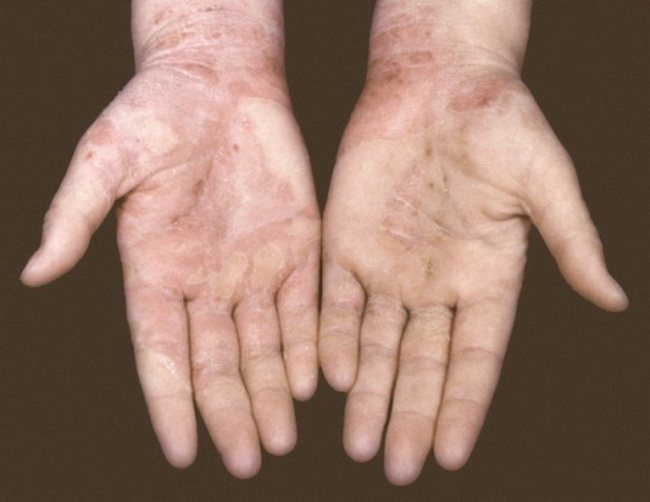
Depending on the area of localization of the rash, the following types of lesions are distinguished:
- allergic eczema on the face. The main reason for its appearance is poor hygiene, frequent performance of traumatic procedures (peelings and cleansing), and the use of cosmetics;
- allergic eczema on the hands. Occurs most often after contact with detergents and cleaning products. Has a chronic relapsing course until the provoking factor is identified and excluded;
- allergic eczema on the legs. This localization is observed mainly in fungal and varicose eczema. Provoking factors in this case are poor hygiene of the lower extremities, increased sweating, injury from uncomfortable shoes, etc.
Diet
Eliminating this disease requires serious effort and great patience from the patient. First of all, you need to reconsider your diet. In this case, a hypoallergenic diet for eczema will help. The menu should contain the following food:
- protein products (fermented milk products, cottage cheese, lean meat);
- vegetables (potatoes, beets, carrots).
It is undesirable to consume the following products:
- chicken eggs, cocoa, chocolate, honey, strawberries, seafood, citrus fruits;
- sweets, white bread and fresh pastries;
- During treatment you should avoid whole cow's milk;
- Limit your child's grain intake.
In many cases, with the right approach to diet, painful rashes on the arms and legs gradually disappear.
How does allergic eczema manifest?
In the clinical course of eczema, several successive stages of the development of the process can be distinguished.
Erythematous stage - red spots appear on healthy, unchanged skin, accompanied by itching.
Papulovesicular stage - in the erythema zone, rashes appear in the form of papules and vesicles (bubbles with liquid).
Weeping stage - the blisters burst after a few days, forming a pink, weeping surface with serous wells secreting serous fluid.
Cortical (dry) stage - wet areas of the skin dry out and become covered with a dry, grayish-yellow crust. In parallel, new foci of the disease may appear in other places, starting from the first stage. Thus, one can simultaneously observe various elements - primary and secondary - as a result of their evolution. This variety of rashes is called false or evolutionary polymorphism. This phenomenon occurs not only in this disease, but is still its distinctive feature from other allergic dermatoses.
Symptoms
The first symptoms of the disease are sometimes ignored, mistaking them for a simple food or contact allergy. But if allergies are suppressed by a single dose of antihistamine, then eczema requires an integrated approach.
First, the patient observes erythema (redness) of the skin. He feels itchy and scratches the affected area. The next stage: small bubbles at the site of redness.
The itching becomes stronger and torments the patient, often intensifying at night. The rashes open, a clear liquid oozes out, and the area of skin becomes wet.
Later, a crust forms on the wounds. Over time, it falls off on its own, revealing healthy, pink skin.
On this topic
- Eczema
How to recognize and quickly treat plaque eczema
- Inna Viktorovna Zhikhoreva
- July 24, 2020
At the same time, several lesions are located on the site: some heal, others appear. “Serous wells” with drops of esudate are visible.
The most common complaint of patients is itching. But burning and pain are possible, especially when the skin cracks in places and blood comes out of the cracks.
Clinical features of various types of eczema
True allergic eczema is characterized by an acute onset, when microvesicles with serous contents appear on swollen, reddened skin. After a few days they burst, revealing a wet surface with erosions. Gradually, the weeping dries out, forming crusts that begin to peel off. An acute process can become chronic. In this case, congestive erythema appears, areas of skin compaction with scales and cracks. The process is often symmetrical with localization on the back of the hands, forearms, feet; in children, the rash can appear on the face, buttocks, and chest.
Microbial eczema develops in areas of chronic pyoderma (around infected wounds, cracks, trophic ulcers). Along the edges of the lesions, rashes of vesicles with purulent contents appear, when opened, yellow or green crusts form. If they are removed, a weeping erosive surface with so-called “serous wells” will be exposed. The process tends to spread.
Occupational eczema occurs in employees and workers as a result of interaction during their professional activities with various chemicals and sensitization of the body by them. Clinical manifestations are similar to true eczema. Resolves quickly when contact with the allergen is eliminated.

Fungal eczema is a combination of the fungal disease itself and the allergic reaction it provokes. It occurs in places affected by the mycotic process, most often on the feet and hands. The color of the rash ranges from pink to gray.
Varicose eczema develops most often on the lower extremities due to impaired trophism of the skin as a result of the progression of varicose veins. Women are more susceptible to this type of disease than men. The process begins with stagnant tissue swelling and redness of the skin, then areas of peeling, erosion and scratching appear. Subsequently, bubbles appear, which begin to peel off to form a weeping surface with crusts on it. The disease is chronic and relapsing, but with surgical treatment of varicose veins a complete cure is possible.
Seborrheic eczema is localized in places where sebaceous glands accumulate (the scalp, forehead, skin behind the ears, upper chest, bends of the limbs and the interscapular area of the back). It is characterized by the appearance of gray or yellow scales and crusts that glue the hair together, after removal of which a swollen pink weeping surface remains. Men in adolescence are more susceptible to this type of disease.
Therapy methods
A doctor can tell you how to properly treat the disease after taking scrapings from the affected skin and performing a test. Only a specialist, based on the test results, can prescribe a treatment regimen. This requirement is relevant due to the fact that some skin diseases (psoriasis, lichen, eczema) occur with similar symptoms. However, their therapy is carried out with different medications.
The following methods and types of drugs are used in the treatment of contact eczema:
- For successful treatment, it is necessary to completely eliminate contact with the irritant. It could be a substance or some factor.
- Antihistamines are used to eliminate itching. Their use allows a person to return to normal life activities. Diazolin, Tavegil or Suprastin may be prescribed.
- Adsorbents are used to remove toxins, microorganisms or allergens from the intestines.
- Physiotherapy procedures such as electrophoresis or ultraviolet irradiation may be prescribed.
- For local treatment, rubbing and lotions are recommended. For this, herbal decoctions are used.
- Sedatives in tablet form are necessary to relieve tension or stress, as well as for general calm.
- In most cases, various ointments containing hormones are used for local treatment.
When performing therapy, the attending physician stipulates that the main effect should come from local treatment. Ointments containing corticosteroids can help cope with rashes on the body and relieve discomfort. However, their use is limited by time frames. These products should not be used for longer than three weeks.
Contact eczema most often appears on the skin of the hands. This complicates the healing process, since the upper limbs take part in any human activity. It is impossible to even do homework without using your hands.
When treating eczema, it is imperative to adhere to a diet. The following should be excluded from the menu:
- various spices;
- eggs and whole milk;
- sour and red berries and fruits;
- baked goods and sweets;
- citrus.
Treatment of allergic eczema
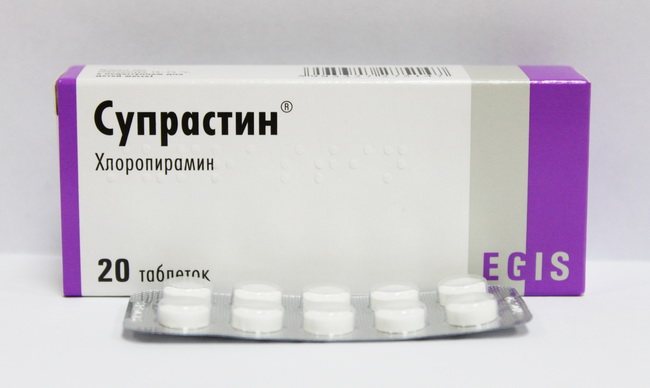
Treatment of eczema must be comprehensive and include:
- Elimination of the provoking allergenic factor.
- Antihistamines (Suprastin, Tavegil, Zirtek, Erius, Cetrin, Claritin, etc.).
- External hormonal agents (Elocom, Celestoderm, Fluorocort, Flucinar, etc.).
- Hyposensitization of the body (intravenous infusions of sodium thiosulfate, calcium chloride, intramuscular injections of magnesium sulfate).
- In case of a weeping process, use lotions with a solution of boric acid, silver nitrate, and antiseptic solutions (Rivanol, Resorcinol). After the weeping stops - oil, water and water-alcohol mash, pastes and cooling creams.
- Vitamin therapy.
- Physiotherapy.
- For microbial eczema or the addition of a secondary infection - antibacterial drugs or corticosteroid ointments with an antibiotic (Celestoderm with Garamycin, Triderm, Lorinden S, Diprogen).
- For seborrheic eczema - topical sulfur ointment, triderm, shampoos with ketoconazole, zinc, tar.
- For fungal eczema - local and systemic antifungal drugs (Clotrimazole, Exoderil, Nystatin, Lamisil, Mifungar, etc.).
- With varicose eczema, it is important to treat the underlying disease and prevent it.
Timely initiation and proper administration of treatment is the main key to success for a complete recovery from this difficult disease.
Diagnostics
Laboratory diagnostic methods can help clarify the cause of eczema. The patient will need to submit:
- general blood and urine tests;
- blood chemistry;
- stool analysis;
- microscopy of scrapings;
- immunogram.
A comprehensive examination will help to accurately determine whether a skin rash is an allergy or not. The importance of timely and correct diagnosis for eczema is important not only because of the risk of complications (secondary infection and purulent inflammation), but also because a false allergy may be hidden under the mask of dermatitis.
A patient prone to allergic reactions may consider the cause of exacerbation of the disease to be the consumption of provoking foods (crab meat, shrimp, mussels, spinach, melon, strawberries, chocolate and others). But based on the results of the examination, it may turn out that eczema was provoked not by substances included in these products, but by various chemical additives (dyes, thickeners, emulsifiers).
Prevention of relapses of allergic eczema
Since the course of this disease is most often chronic, prevention of exacerbations is important for maintaining the health and quality of life of patients. Basic preventive measures include:
- compliance with personal hygiene rules;
- use only hypoallergenic products;
- diet;
- timely treatment of chronic diseases;
- wearing clothes and shoes made of natural fabrics and materials;
- use of gloves when handling cleaning agents and detergents;
- prevention of chronic stress and fatigue.
If, despite all precautions, the first signs of exacerbation of eczema appear, you should immediately consult a doctor.
Diet food
Diet does not play a decisive role in the treatment of allergic eczema. But the following is important. Since the disease is caused by allergens entering the body, it makes sense to exclude all potentially dangerous foods from the menu.
This:
- chocolate;
- coffee;
- eggs;
- honey;
- sweets and other confectionery products;
- spices.
On this topic
- Eczema
All about tylotic eczema
- Olga Aleksandrovna Kalinina
- July 11, 2020
During an exacerbation, the patient removes from his table:
- salty dishes;
- smoked meats;
- marinades.
Eggs and honey can be consumed, but in very limited quantities. If possible, exclude chocolate, candies and coffee until symptoms subside. Salty and pickled food in itself does not cause allergies, but it irritates the stomach and intestines, and a malfunction in their functioning contributes to an increase in eczema.
Nutritionists recommend including in your diet:
- lean meats, chicken;
- fish;
- porridge (oatmeal, buckwheat, rice);
- steamed vegetables
It is better to stew or bake food rather than fry it.
The menu for one day may look like this. Breakfast: oatmeal, green or black unsweetened tea. Lunch: chicken soup, fish and mashed potatoes. Dinner: cottage cheese casserole.
At night you are allowed to drink a glass of kefir without sugar. Fermented milk drink soothes the intestines and helps normalize digestion.


